This infographic gives readers a glimpse into the history of bimaristans, early Islamic hospitals that revolutionized medicine and healthcare. At the heart of the poster is a cutaway view of the oldest standing bimaristan in the world, Bimaristan Nur Al-Din.
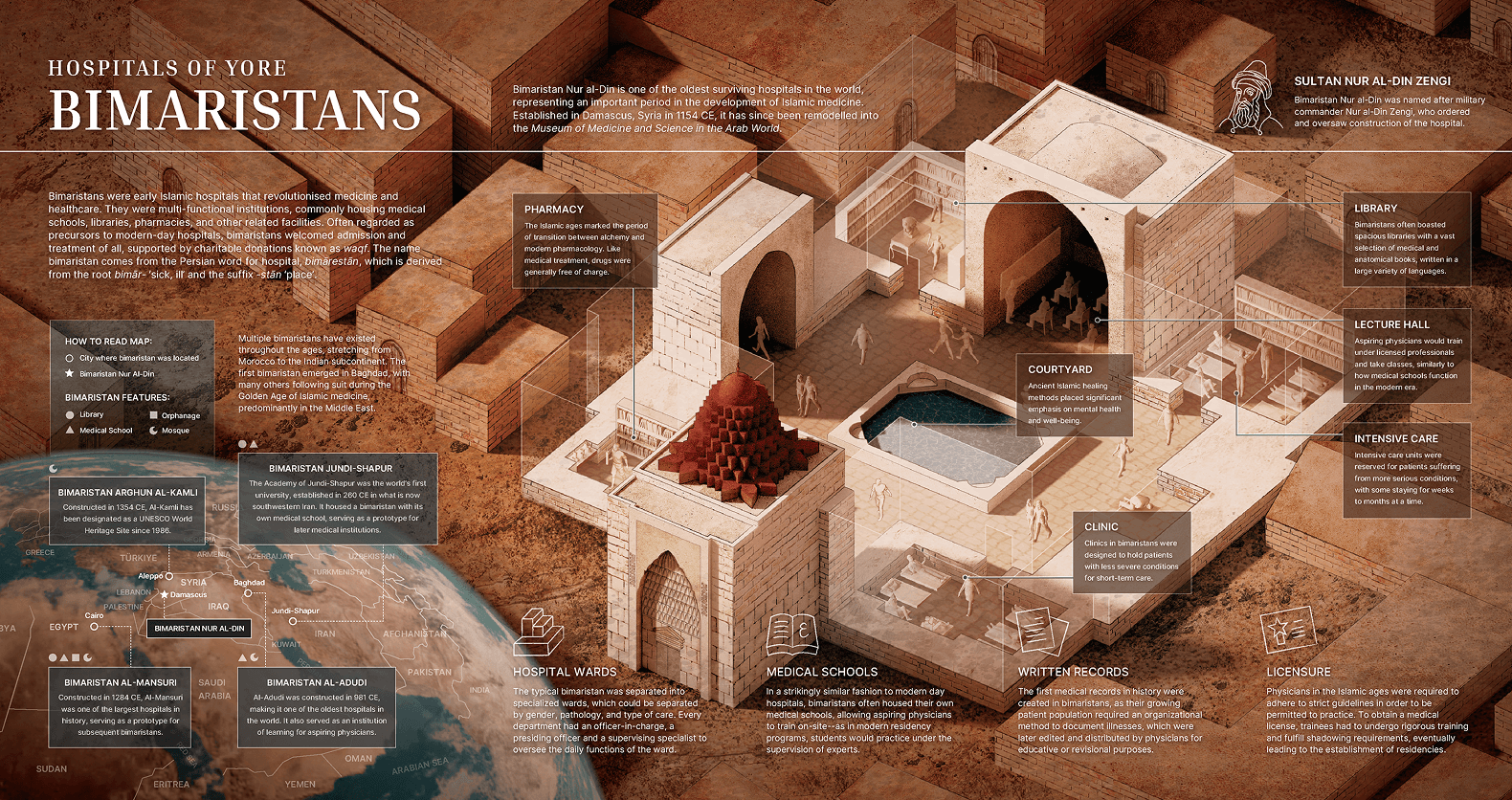
Bimaristans were multi-functional institutions, commonly housing medical schools, libraries, pharmacies, and other related facilities that blazed the trail for modern hospitals in other regions of the world.
However, despite their profound influence on the development of modern medicine, bimaristans remain largely overlooked in modern-day narratives on the history of healthcare.
This infographic aims to raise awareness of the medical innovations introduced by bimaristans, encouraging a more inclusive understanding of global medical history.
After collecting peer-reviewed articles, books, and other resources on the history of bimaristans, I developed a comprehensive plan for the content and quick thumbnail drafts of the infographic.
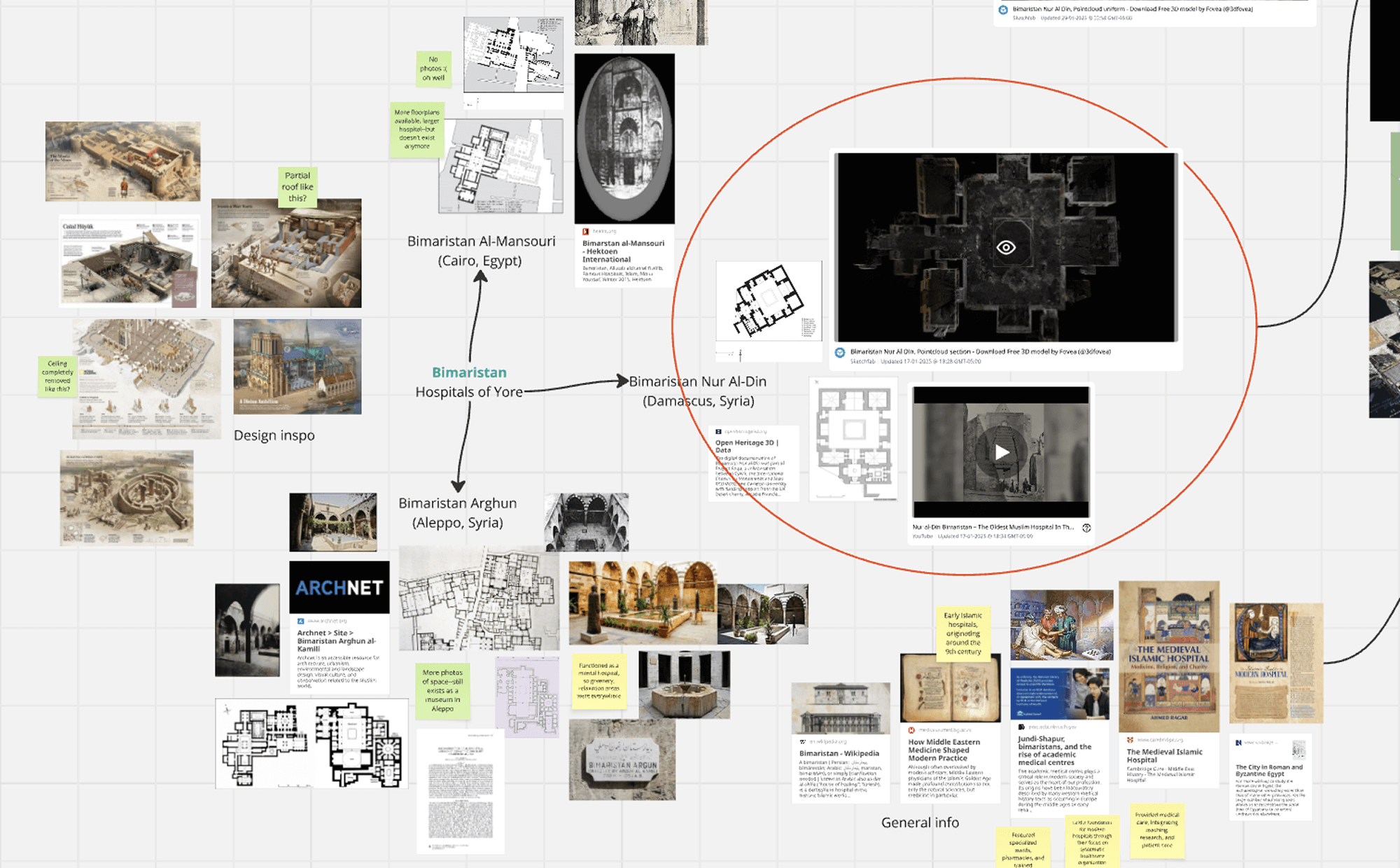
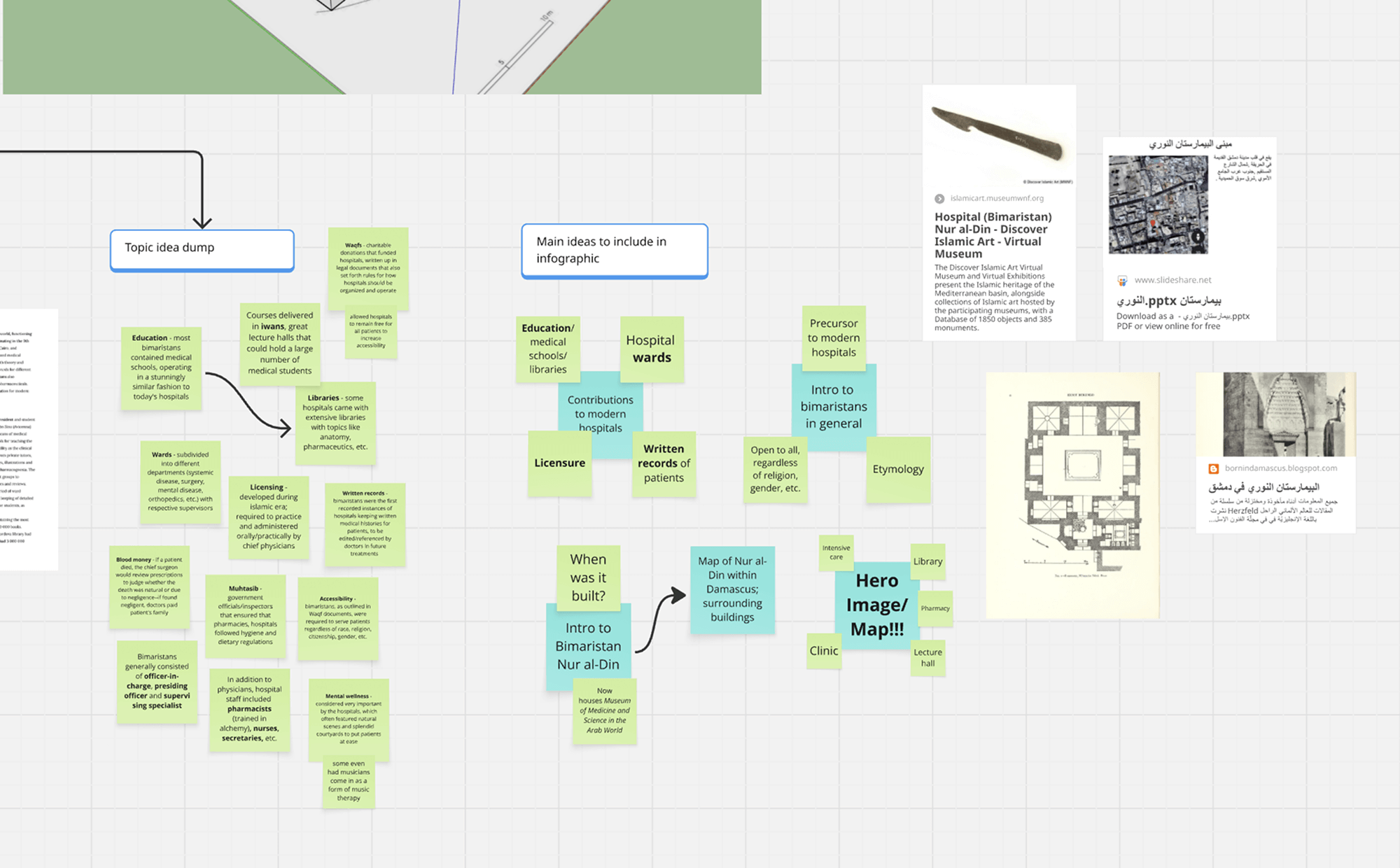

I started off by creating a digital 3D model of the hospital in SketchUp, using floor plans available from online databases as reference. This provided a more accurate and standardized maquette to work off of.



I then brought the model from SketchUp into Maya, where I staged the scene and added additional details such as the surrounding buildings and water. More structurally complex elements, like the muqarnas dome, were modelled first in 2D (in Illustrator) and subsequently converted into 3D geometry in Maya.

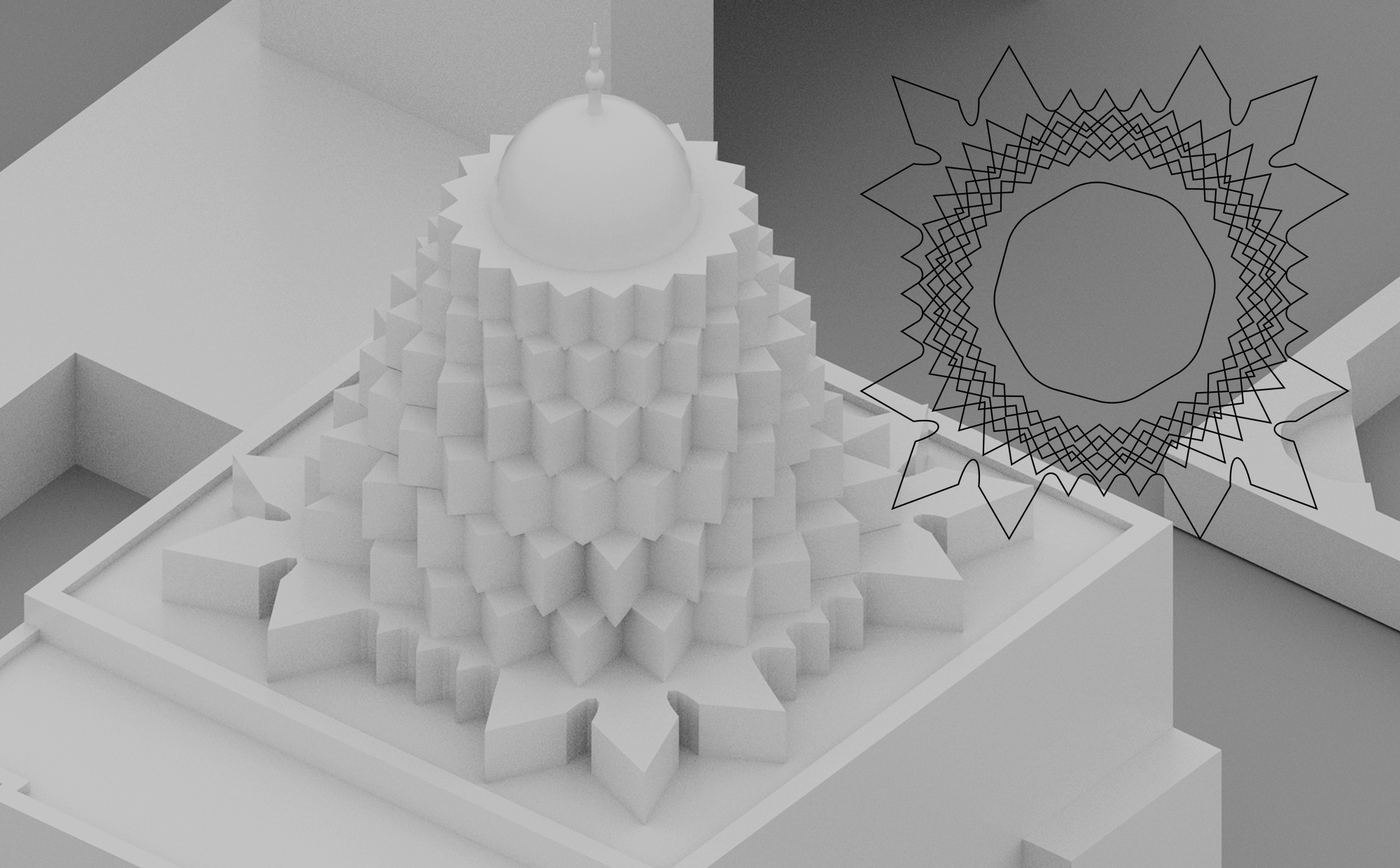
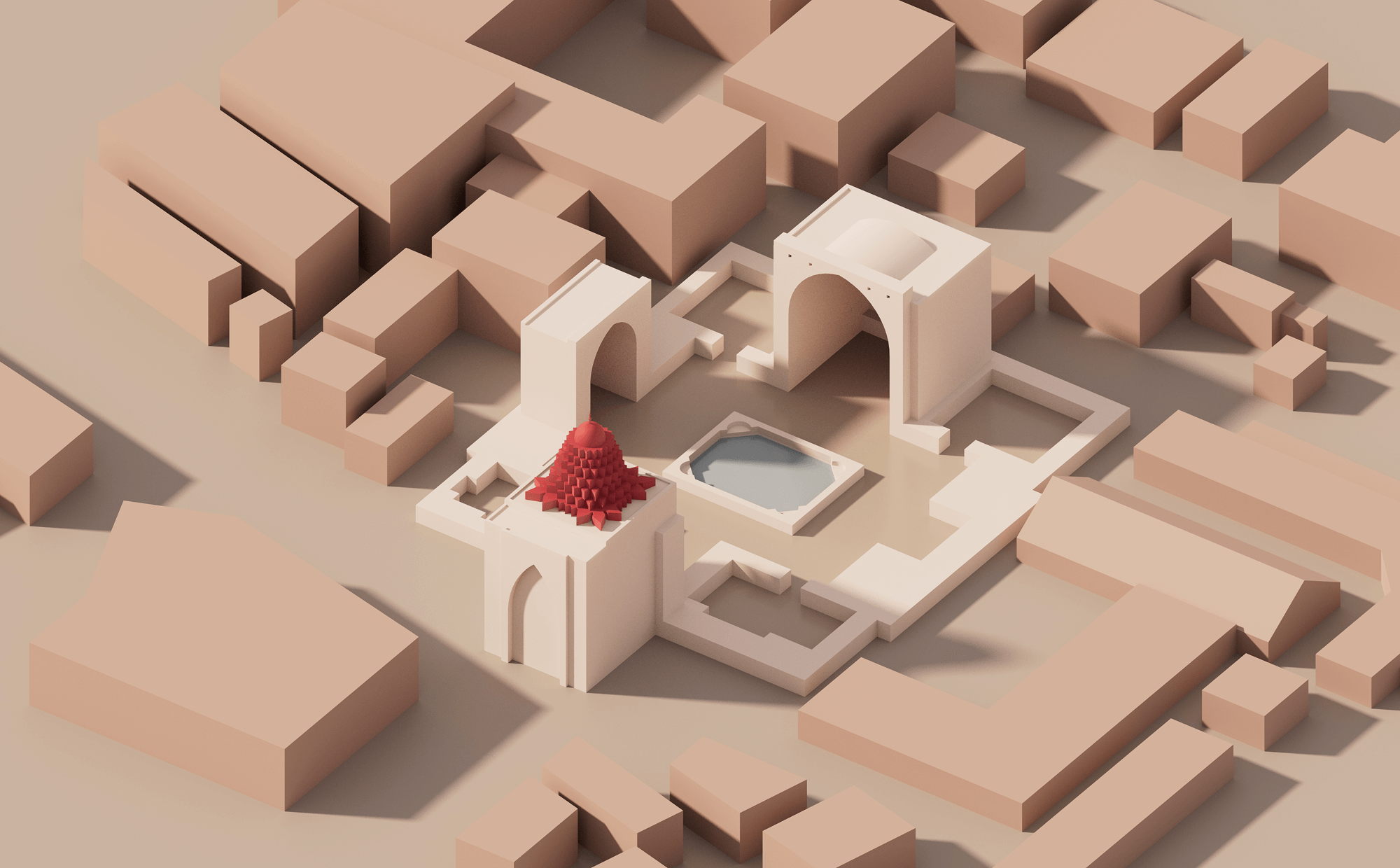
Later, I added textures and details in Photoshop using a variety of techniques, including photobashing and digital painting.
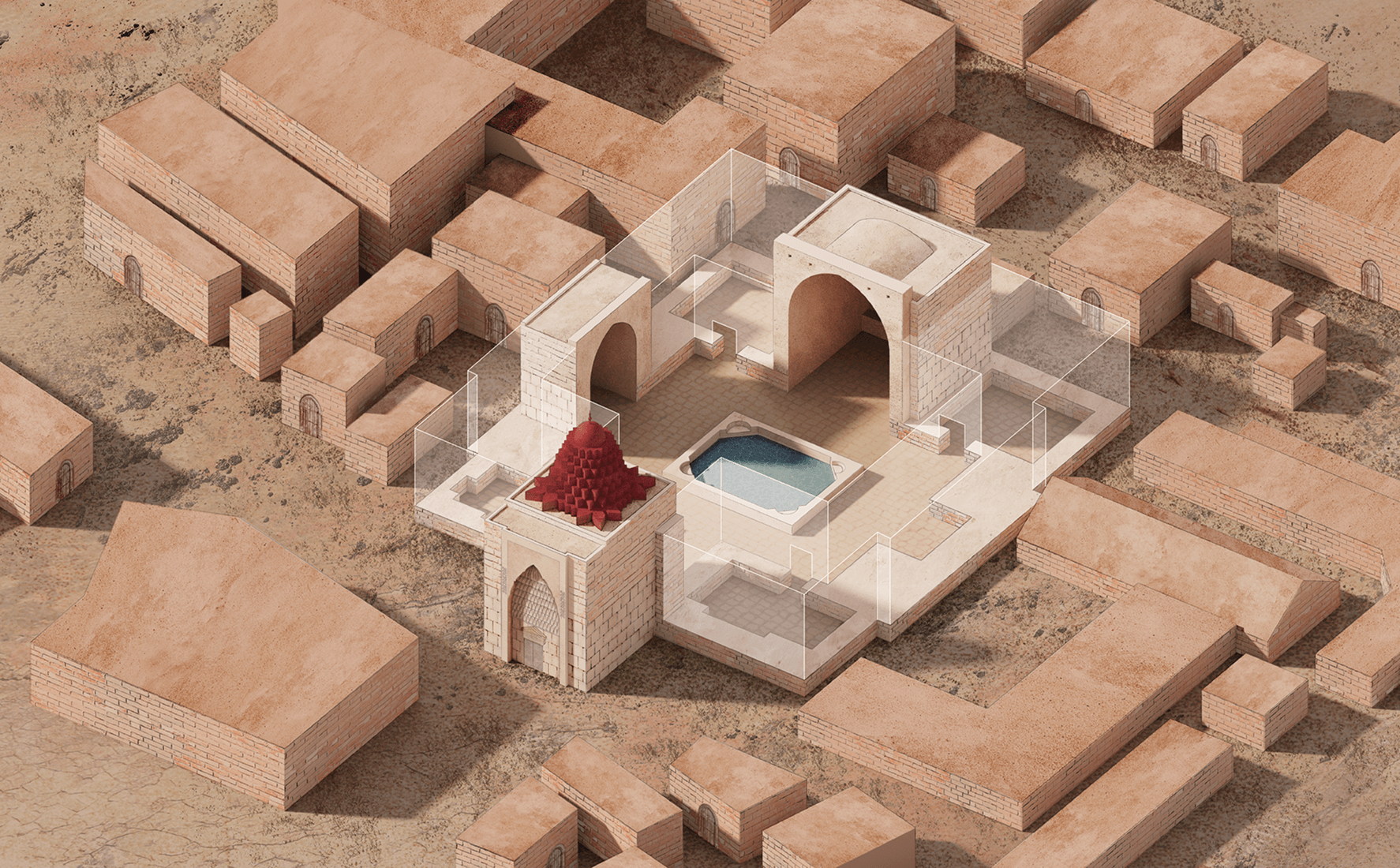
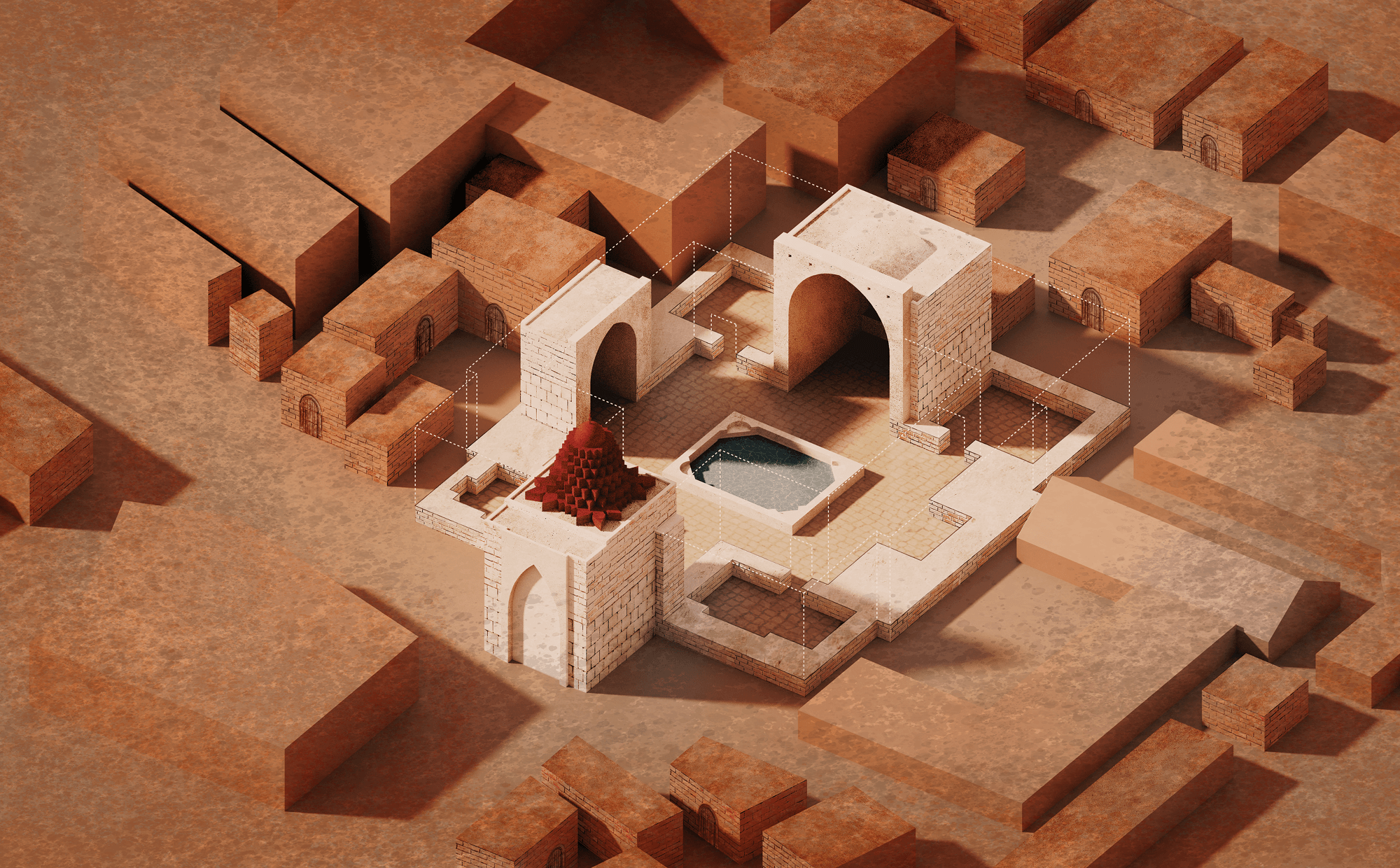
Final geometric details (i.e. the semi-transparent boxes indicating the original form) and graphic design elements (i.e. text, callouts, icons) were added in Illustrator. I created a number of comprehensive thumbnails in Figma before landing on a layout I was happy with, which I then cleaned up in Illustrator.
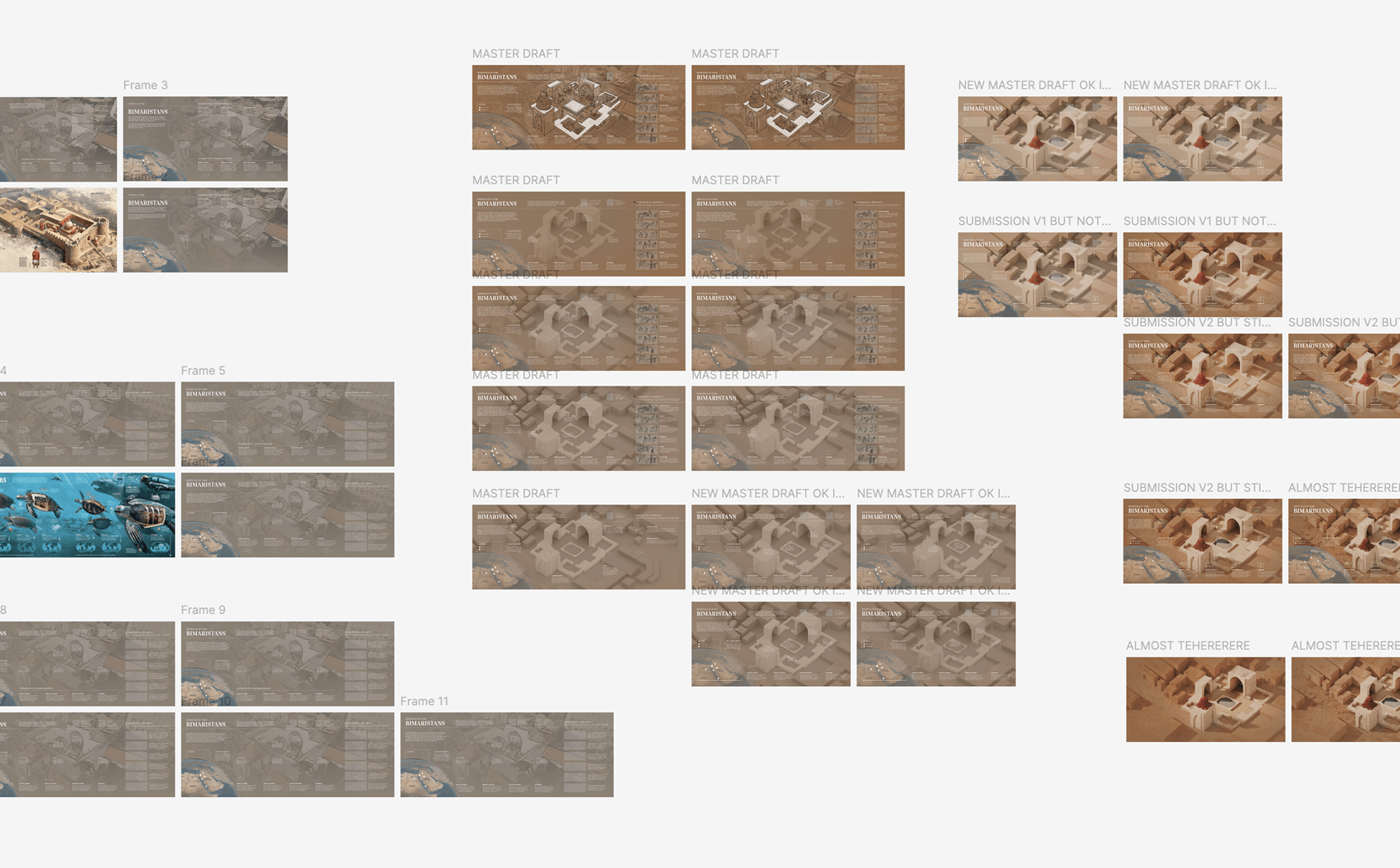

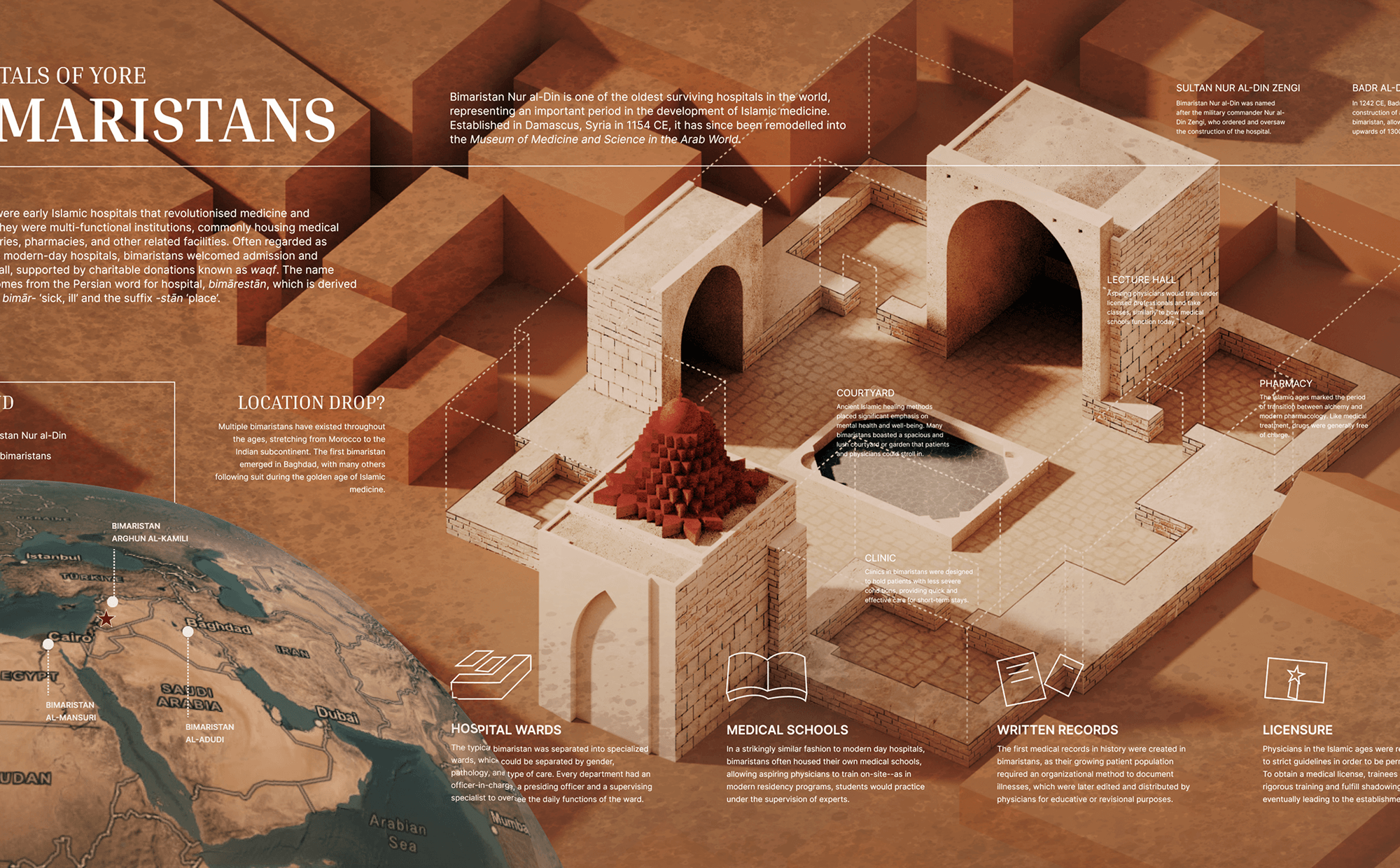
To provide more context to readers, as well as bring a little bit more life to the composition, I added three-dimensional scenes within the hospital. These scenes were created using Cinema4D and were overlaid in Photoshop. Additionally, the map was set up in Cinema4D using open-source texture/displacement assets to create a more dynamic and realistic visual aesthetic.
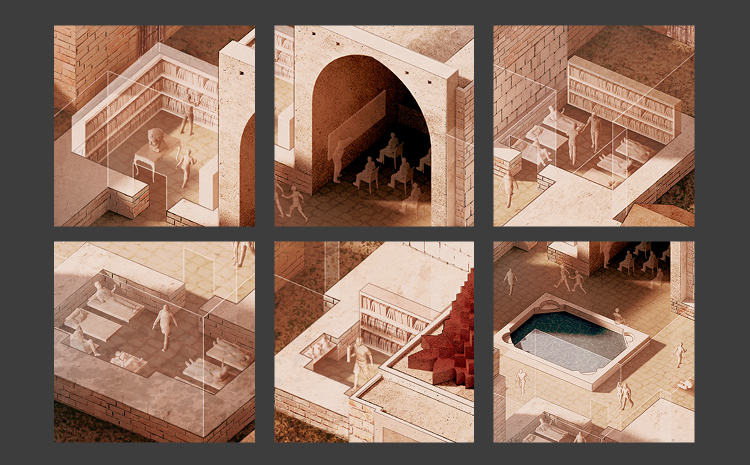

- Alston, R. (2002). The City in Roman and Byzantine Egypt. Routledge.
- Baqué, V. (1995). Du Bimarîstan à l'asile moderne: mise en place de l'institution et de la médecine psychiatriques en Egypte (1882-1930) (Doctoral dissertation, Aix-Marseille 1).
- Kump W. L. (1972). Historic hospitals. The Bimaristan at Jundi Shapur. Minnesota medicine, 55(1), 14.
- Miller A. C. (2006). Jundi-Shapur, bimaristans, and the rise of academic medical centres. Journal of the Royal Society of Medicine, 99(12), 615–617.
- Open Heritage 3D. (2019). Bimaristan Nur al-Din. https://openheritage3d.org/project.php?id=nkv2-bn91.
- Orabi, R. (2023). Adapted in place: A digital geometric analysis of the muqarnas dome of al-Bimaristan al-Nuri in Damascus. Digital Applications in Archaeology and Cultural Heritage, 29.
- Podgorny G. (1966). Islamic-Persian medical education. A survey from Jundi-Shapur to Cairo. North Carolina medical journal, 27(3).
- Ragab, A. (2015). The Medieval Islamic Hospital: Medicine, Religion, and Charity. Cambridge: Cambridge University Press.
- Tabbaa, Y. (1985). The Muqarnas Dome: Its Origin and Meaning. Muqarnas, 3, 61–74.